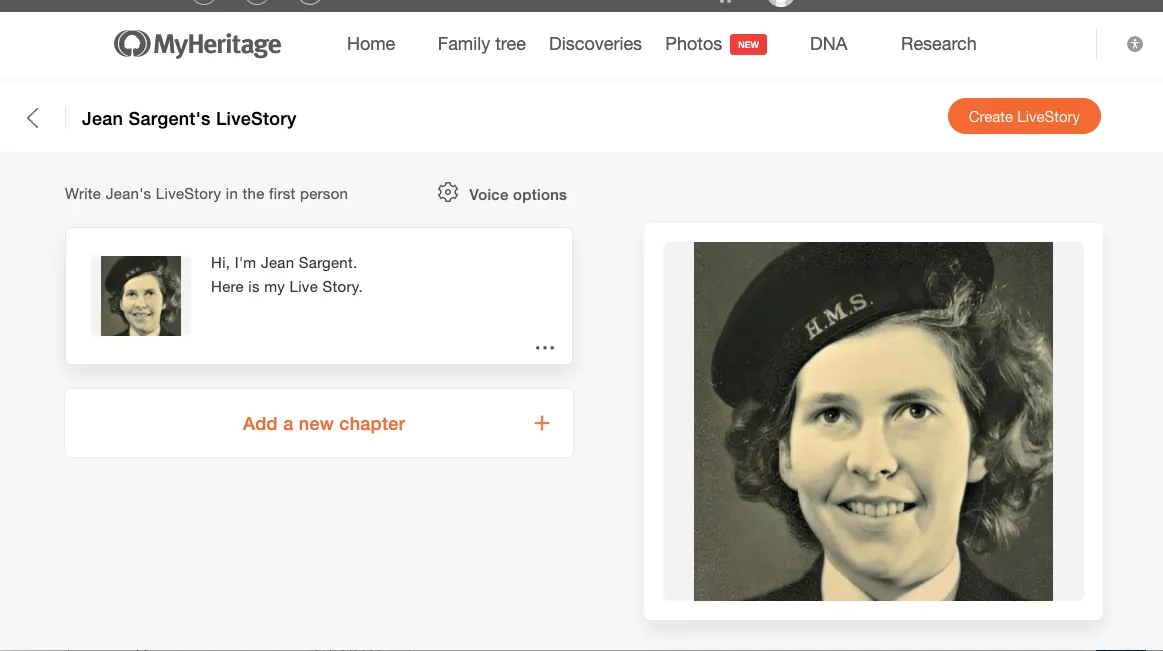Family history website MyHeritage has unveiled LiveStory, a new feature that uses AI to let the people in old photographs move and speak.
LiveStory was developed with company D-ID and follows MyHeritage’s launch in 2021 of Deep Nostalgia, a tool that animates old photographs to make them move.
To use LiveStory, you will need to be a MyHeritage subscriber or register for a free account.
When you upload your photograph, MyHeritage will begin by using photo enhancement tools on the image, then ask you to enter the gender and name of the person in the photograph.
You are then asked to write the person’s LiveStory in the box provided, and select a voice from different ‘Voice options’, based on the person’s gender and nationality. For example, there are four options for a woman speaking ‘English (U.K.)’.

LiveStory will convert the writing to audio using text-to-speech technology, and create a video animating the person’s face and mouth to speak.
If you already have a family tree on MyHeritage, the website can create an automatic LiveStory using information and photographs from your tree. You can also edit and customise the video before sharing it.
A gallery on the MyHeritage website features LiveStory videos of famous historical figures including entertainer and French Resistance agent Josephine Baker, investigative journalist Nellie Bly and escapologist Harry Houdini.
To address concerns about LiveStory being used to create ‘deep fakes’ (fake videos of real people created using artificial intelligence), users are asked to only use the technology on photographs of deceased individuals, not use it on a photograph of a living person without their permission, and not use it to create content that is obscene, false or offensive.
Family historians on Twitter disagreed in their reaction to LiveStory, with some admiring the technology and others calling it “creepy”.
In a post on his blog Scottish Genes, genealogist Chris Paton pointed out that the tool doesn’t offer voice options with a Scottish accent.
He wrote: “This latest step for me is a step too far. It bursts that well known media concept of the 'wilful suspension of disbelief' to accept something as being real, and I was in no way convinced by a barely conceiveable animated manequin (sic) talking in a completely unrealistic accent. So this one is definitely not for me.
“Perhaps it's time to concentrate more on the genealogy side of things?!”
In the FAQs on the LiveStory feature on its website, MyHeritage said: “Many people love the LiveStory feature and consider it extraordinary, while others find it creepy and dislike it. Indeed, the results can be controversial and it’s hard to stay indifferent to this technology. We invite you to create your own LiveStories and share them on social media to see what your friends and family think.”
You can see a video we made using LiveStory here:
Rosemary Collins is the features editor of Who Do You Think You Are? Magazine
